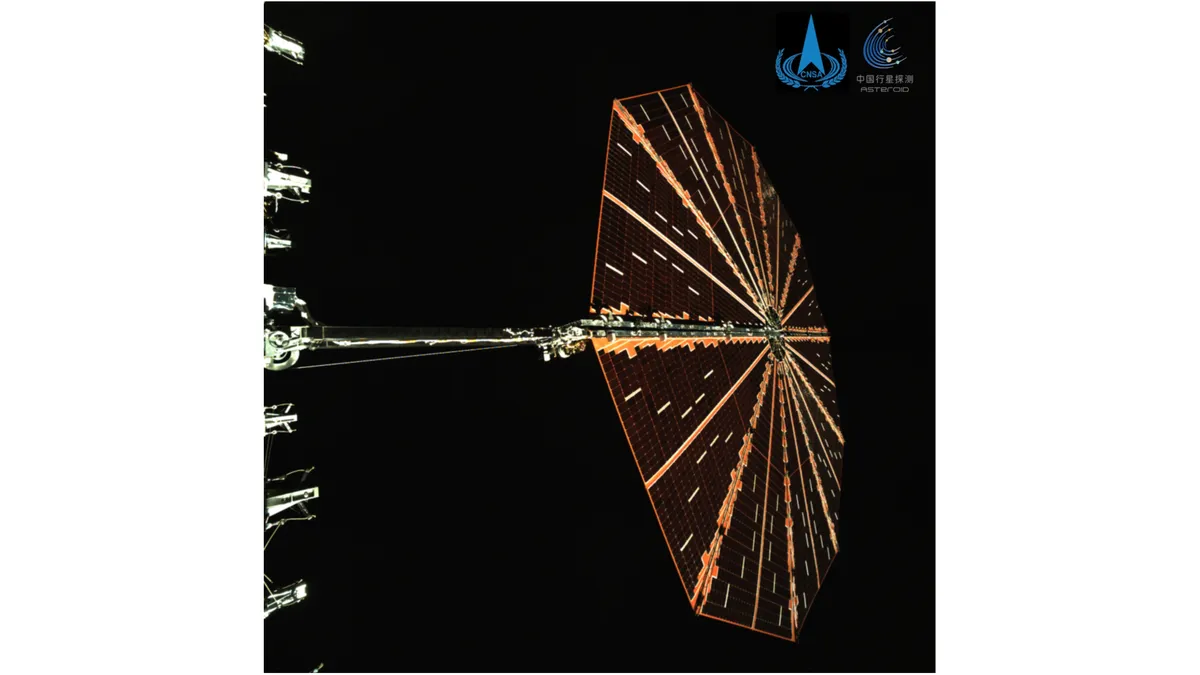
China has unveiled the first image of its Tianwen 2 mission, a significant step in its ambitious plans to explore a near-Earth asteroid. Launched on May 28 aboard a Long March 3B rocket, this groundbreaking mission is designed to rendezvous with and collect samples from the enigmatic asteroid Kamo'oalewa, one of Earth's seven known quasi-satellites.
The latest updates from the China National Space Administration (CNSA) indicate that the Tianwen 2 spacecraft is functioning optimally and is currently positioned over 3 million kilometers (1.86 million miles) away from Earth. In a statement released on June 6, CNSA confirmed the spacecraft's successful operation, marking a crucial milestone in the mission's timeline.
Accompanying this announcement, CNSA shared an image captured by an engineering camera aboard Tianwen 2, showcasing one of its two circular solar panels. These solar panels bear a striking resemblance to those found on NASA's Lucy mission, which is set to explore the Trojan asteroids near Jupiter. This image represents the first real visual insight into the Tianwen 2 mission, as prior communications had only included artistic renderings, and the launch itself was not broadcast live.
Tianwen 2 is projected to reach Kamo'oalewa by July 2026, following a series of engine burns designed to fine-tune its orbit around the asteroid. Once it arrives, the spacecraft will spend several months orbiting and studying Kamo'oalewa, which scientists theorize may be a fragment of the Moon, ejected during a colossal impact event.
After completing its analysis and collecting samples, Tianwen 2 will return to Earth, delivering the samples in a reentry capsule by late 2027. Following this, the mission will utilize Earth's gravity for a slingshot maneuver, setting its course towards main belt comet 311P/PANSTARRS around 2035. This ambitious journey aims to gather invaluable data about the composition and nature of these planetary bodies, thereby shedding light on significant questions regarding the evolution of our solar system and the origins of water on Earth.
Notably, Tianwen 2 is not China's inaugural deep space encounter with an asteroid. In 2012, the country’s Chang'e 2 lunar orbiter successfully performed a flyby of the asteroid Toutatis as part of an extended mission following its lunar mapping efforts. Furthermore, China possesses substantial experience in sample-return missions through its Chang'e 5 initiative, which collected lunar material from the near side in 2020, and the upcoming Chang'e 6 mission, anticipated to yield the first samples from the Moon's far side in 2024.
China's Tianwen 2 mission marks a significant advancement in space exploration, promising to enhance our understanding of both asteroids and comets, as well as their roles in the broader context of our solar system's history.